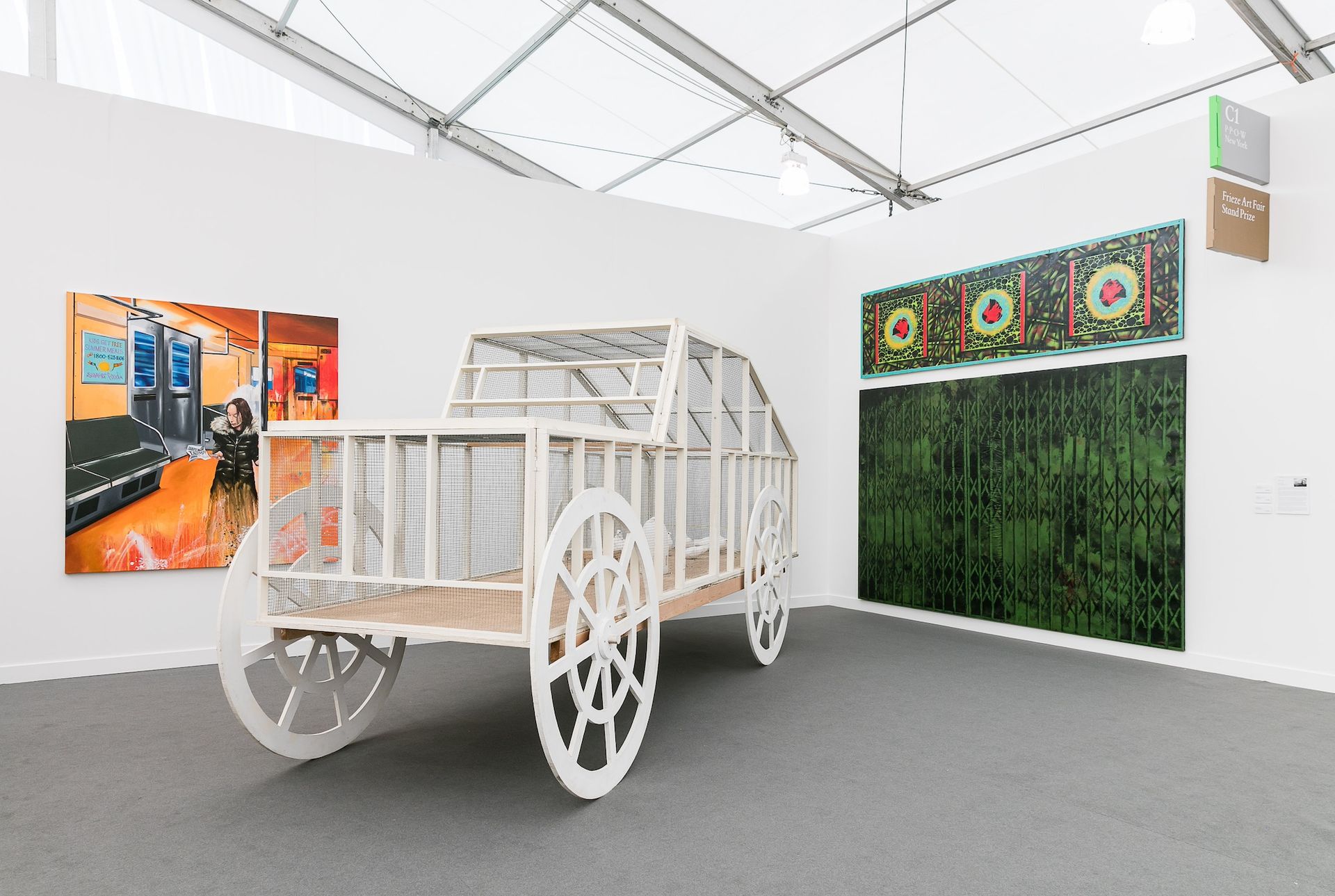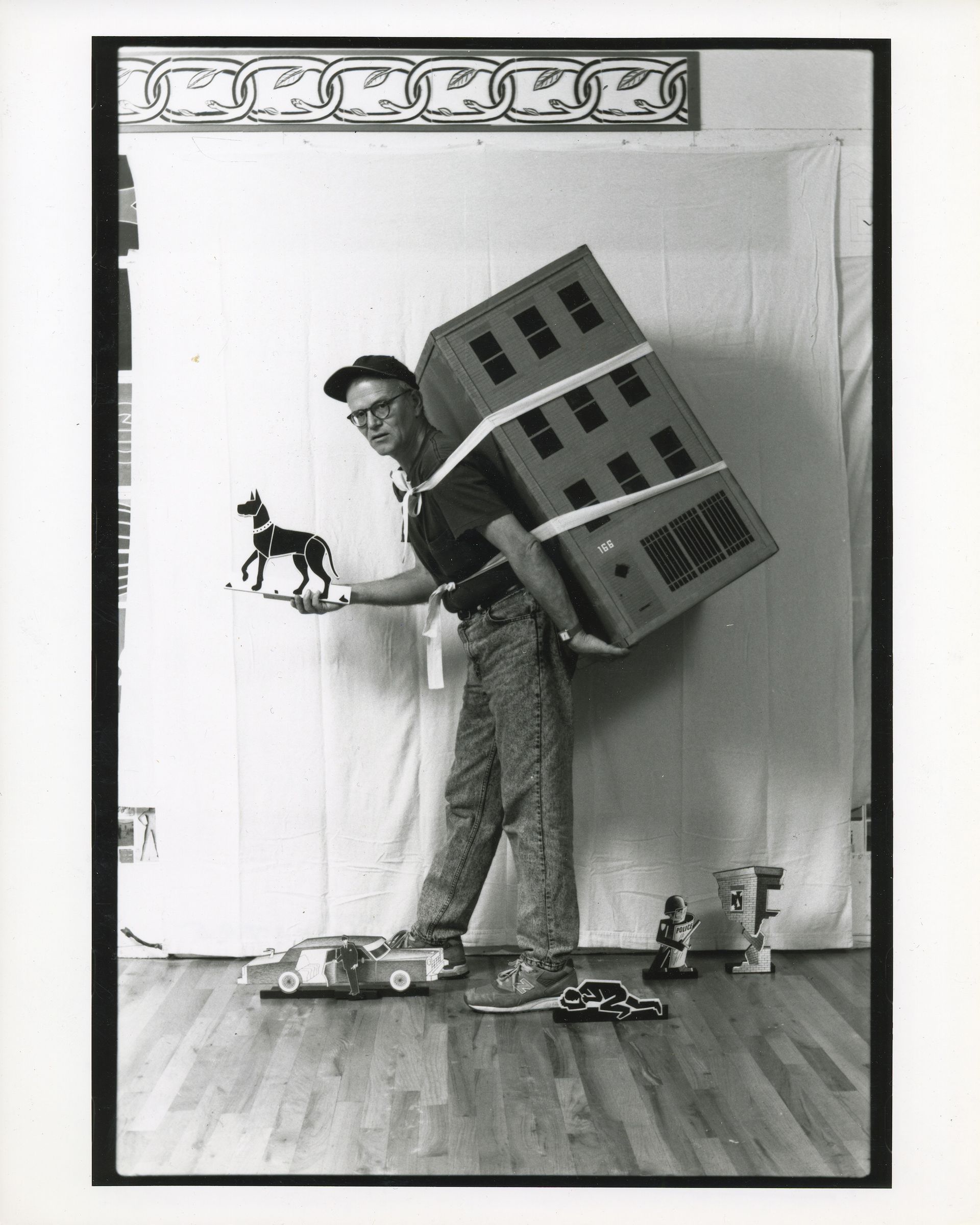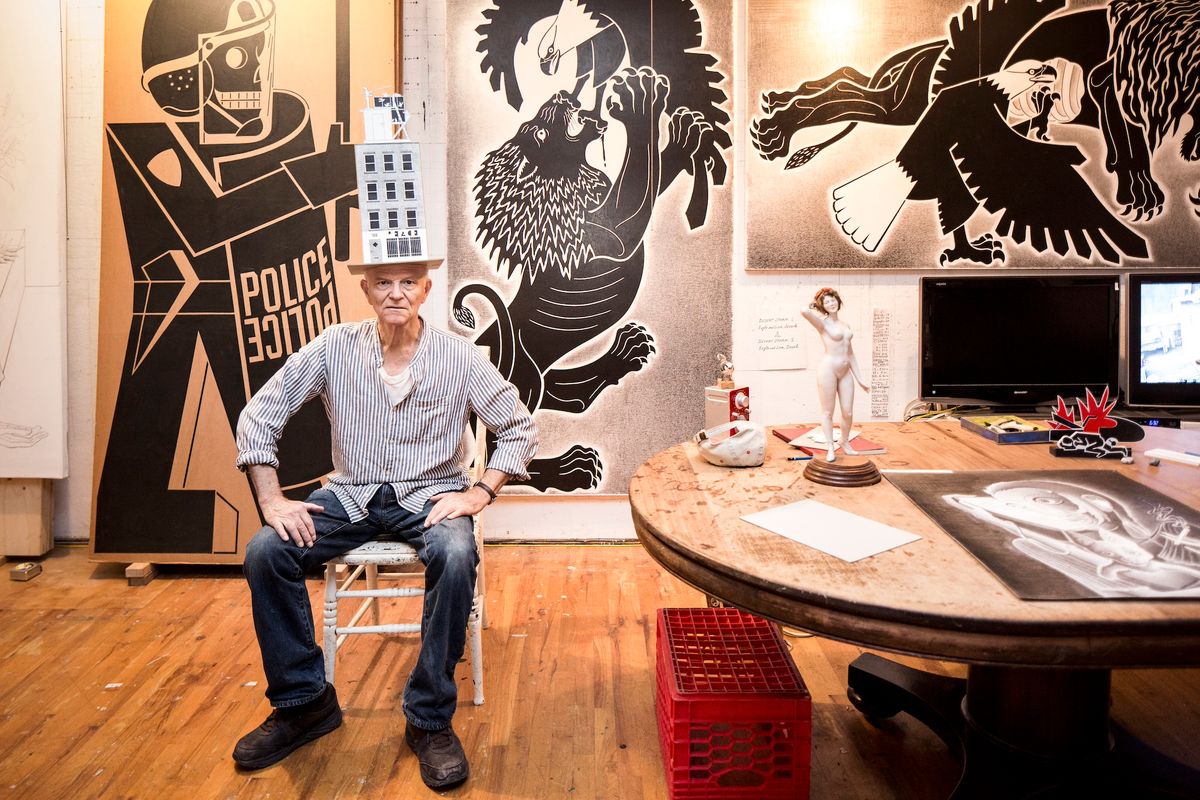Anton van Dalen, the Dutch American artist whose work memorialised New York’s East Village—the neighbourhood in which the artist lived and worked for more than 50 years—has died. Van Dalen was 86 years old, and representatives from PPOW gallery, which had been exhibiting the artist's work since 2015, confirmed his death, saying that he died in his sleep of natural causes on 25 June.
“Anton is an example of an artist who follows his own path without worrying about the commercial art world,” Wendy Olsoff, a co-founder of PPOW and longtime friend of the artist, tells The Art Newspaper. “He was able to create a world for himself, and others came to him—in time. He was very much a teacher (and he taught for years at the School for Visual Arts) but also every interaction was a moment for him to share his world view—not in a mission-driven way—more by example. He was also very wise—I always told him he was leaving breadcrumbs for us to discover.”
In a 1986 review for Artforum, the critic John Yau wrote that Van Dalen “moved [to the East Village] and addressed the place in his work long before it became either a fashionable place to live or acceptable subject matter”, adding that he “uses this approach to document his family life, dreams, interest in animals, imagination and his neighbourhood. He makes no bones about who he is—he is an artist and a civic-minded person with a family. One of his accomplishments is the gentleness with which he represents these two modes of being.”
The artist’s dedication and decades-long practice of documenting the neighbourhood in which he lived and raised his family—as well as the many pigeons he raised in his famous rooftop coop—was a springboard from which Van Dalen was able to portray wider social issues as well as create an ongoing image of his own life.

Anton van Dalen's The Pigeon Car (1987) on the PPOW stand at Frieze New York in 2017 Photograph by Mark Blower. Courtesy of Mark Blower/Frieze.
Van Dalen was born in the Dutch city of Amstelveen, just outside of Amsterdam, in 1938. During the Second World War, his childhood home was seized by the occupying Nazis, and in 1954 his family emigrated to Toronto. Van Dalen moved to New York City in 1966 and in 1971 he moved with his wife and two young children into the East Village townhouse he would live and work in for the rest of his life.
“His expectations of living in America were vastly different than the reality that greeted him on the Lower East Side,” Olsoff says. “His empathy for people from disparate classes and ethnicities was deeply felt. He became very engaged in social justice—and this is a global shared history. So the symbols he stencilled—on his home for instance—spoke to a very large community well outside the art world.”
Located just north of Tompkins Square Park at 166 Avenue A, his home is easily recognizable by the mural that Van Dalen painted on its façade, in which the artist spelled out the word “Peace” in uppercase, stylised letters. This 2020 letter that Van Dalen wrote to editors of the East Village-blog EV Grieve includes photographic documentation of the evolution of his building’s facade over the decades. “I consider myself a documentarian of the East Village, yet I am a participant and spectator to its evolution,” he wrote. “My documenting became more and more informed by the stories of my neighbours' acts of activism. And a commitment on my part to be true to those lives, of their raw heartfelt emotions, birthed on the street. Their truth telling kept my work honest, brought authenticity to my documentation, so critically important.”
In the early 1970s, Van Dalen was making drawings largely inspired by the Surrealists—a far cry from Minimalism, Conceptual Art and the other post-Abstract Expressionism artistic movements that dominated New York’s art scene at the time. But it was the urgency of his immediate surroundings that led him to shift the focal point of his practice.

Anton van Dalen, Avenue A Cut-Out Theatre, 1996 Photo by Tom Warren
“From my studio, I could hear the constant noise of fire trucks. There were a lot of empty buildings and fires. It was suddenly as if I was in World War II, except it wasn’t Holland, it was here. It was like I was living in a German occupied community again. I saw it in the abandoned buildings, the fires, the stabbings, people openly shooting up heroin, cops and firemen being very brutal to the community,” he said in a 2016 interview with Hyperallergic. “I thought, what am I doing up here? I’ve got to go down onto the street and make drawings. I stepped out with a little notebook and started making sketches of the most basic things; the bodega signs, the ‘Jesus Saves’ signs, the storefronts, the fire hydrants, the dogs shitting—the whole neighbourhood had fallen into total neglect because the city didn’t keep up. I felt more and more like I was a sort of journalist.”
Van Dalen’s drawings and paintings were populated with the textures of his community—hypodermic needles, dilapidated buildings and abandoned cars, mating dogs, policemen and sex workers all abound—and of course depictions of Van Dalen himself, his home and his rooftop pigeon coop, make frequent appearances in the work. In works like Avenue A Cut-Out Theater, a performance Van Dalen first carried out in 1996, he charts the evolution and gentrification of the neighbourhood. In it, Van Dalen dons a model of his own home strapped to his back as cut outs of various East Village characters rotate in and out. The work was performed and the cut outs displayed as recently as 2015 at PPOW. Van Dalen’s most recent solo exhibition was in 2022, also at PPOW, and his work today can be found in a number of permanent collections, including the Whitney, the Museum of Modern Art (where Avenue A Cut-Out Theater was once performed), and the Brooklyn Museum.
“You could not have any kind of imagery,” Van Dalen said of the New York art scene in the 1970s during his 2016 interview with Hyperallergic. “Your art had to be repetitive and serialized. It could not have any signs of human touch. It shouldn’t have a signature or a narrative. There were all these rules and if you did not work within them, it was if you didn’t exist or that your work was from another age. Today you can do anything. It’s totally the opposite. Now, at least for me, every young artist resembles an outsider artist.”



